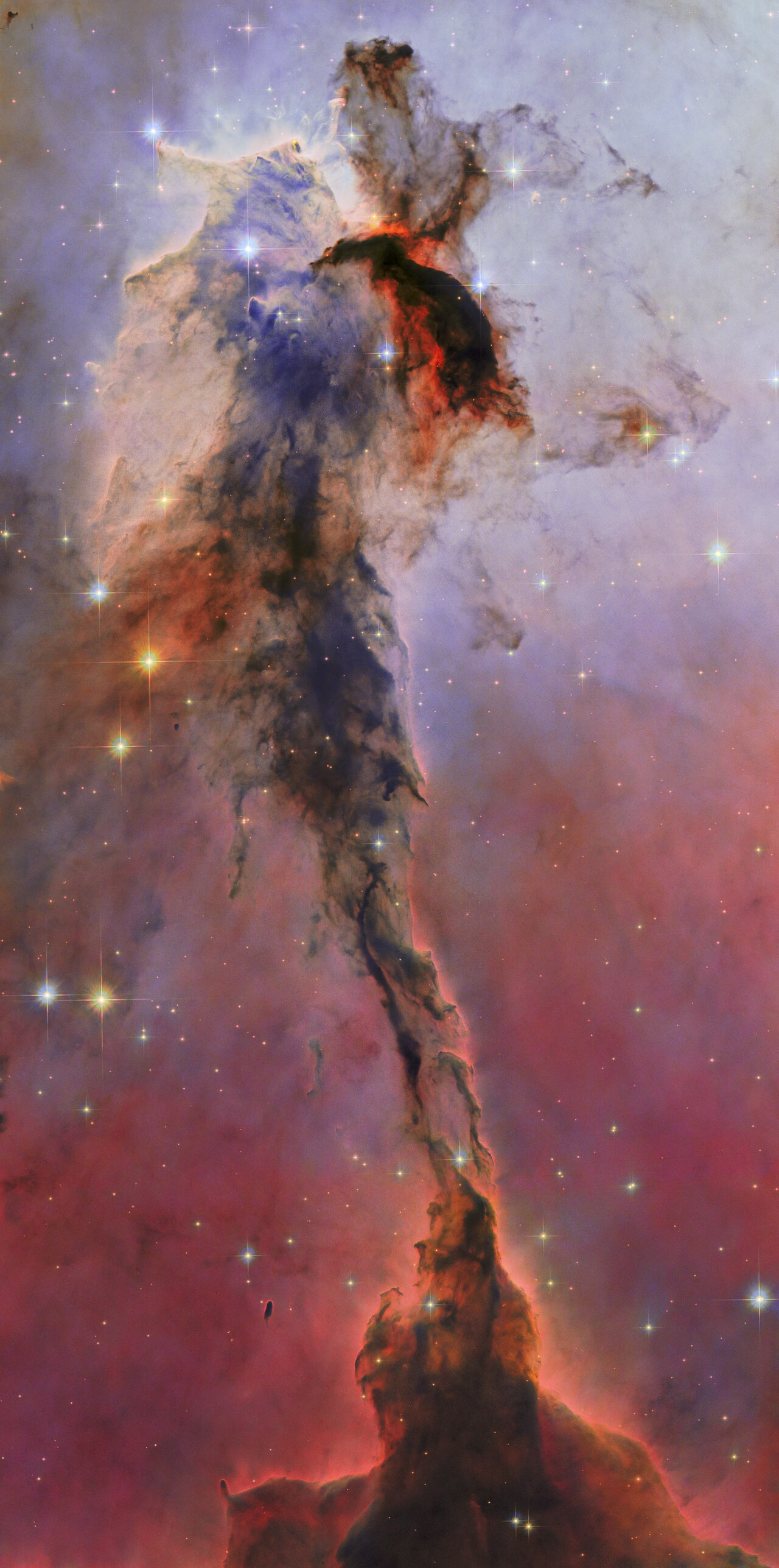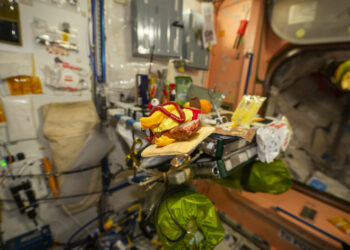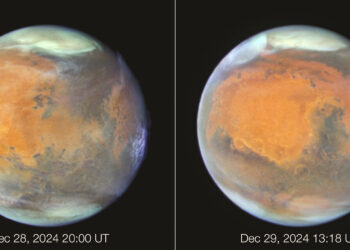The stunning Eagle Nebula, often called the Pillars of Creation, is one of the universe’s most recognizable features. A renowned photograph captured by the Hubble Space Telescope showcases these majestic pillars, and to mark its 35th anniversary, Hubble has revisited the nebula to capture new imagery.
The image displayed below reveals an impressive formation of gas and dust, an intricate part of the Eagle Nebula. Towering at 9.5 light-years in height, this structure is composed of cold hydrogen gas, within which new stars are forming amid the nebula’s cloud-like formations.

ESA/Hubble & NASA, K. Noll
As Hubble scientists describe, “The core of the nebula, which lies beyond the view of this image, is home to a cluster of youthful stars. These stars have carved out a vast cavity at the nebula’s center, resulting in the creation of pillars and globules of dusty gas. One distinct feature of this area extends like a finger pointing towards the center, where the active young star cluster resides.”
This stellar activity contributes to the nebula’s sculpted appearance. Young stars shine brightly and give off significant amounts of radiation, along with a flow of particles known as stellar wind. This stellar wind shapes the surrounding clouds of dust and gas, leading to the remarkable formations seen in the image. Some of the gas becomes ionized due to the stars’ radiation, causing it to emit a radiant glow. Conversely, where dust is densely packed, it appears opaque, creating the dark silhouettes captured in the photograph.
The various hues present in the image represent different elemental compositions within the nebula. The blue tones primarily stem from ionized oxygen, while the red tones emerge from hydrogen. However, this dark structure is not eternal; over time, the radiation from young stars will gradually erode the pillars.






